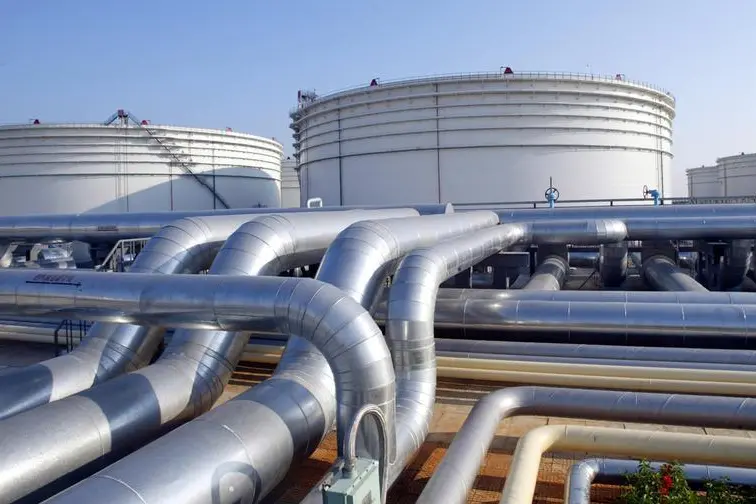PHOTO
* Sulphur content lowered to 10ppm from 500ppm
* Change to reflect global shift towards cleaner diesel standards
* Could increase liquidity in 10ppm sulphur diesel trade -traders
(Adds comments from traders, analysts)
By Jessica Jaganathan
SINGAPORE, Dec 5 (Reuters) - Oil pricing agency Platts plans to lower the sulphur content of its benchmark gasoil assessment in Singapore and the Middle East from January 2018, in line with a global shift towards cleaner fuels, the company said on Monday.
Platts, a unit of S&P Global Inc
SPGI.N
and whose benchmarks are use in major oil contracts in Asia and the Middle East, will lower the sulphur specification in its benchmark gasoil assessment from 500 parts per million (ppm) of sulphur to 10 ppm, it said in a note to subscribers.
"The lower sulphur specifications reflect changing supply and demand trends across the regions, as well as the fact that global waterborne diesel trade is now predominantly maximum 10 ppm, known as ultra-low sulphur diesel," it said in the note.
As vehicle use grows globally, with Asia accounting for most of the gains, the movement towards cleaner fuel standards to cap sulphur emissions has gathered pace. Newly built refineries are also producing cleaner fuels in larger volumes.
Asia's key oil consumers China and India are moving towards cleaner fuel standards, pushing up trading volumes in gasoil with 10 ppm sulphur, a grade used by Australia, the region's largest importer of the fuel.
urn:newsml:reuters.com:*:nL3N1BI2A1
The change will take effect from Jan. 2, 2018 for its free-on-board (FOB) Singapore, Middle East and Korea gasoil assessments and follows consultation with relevant stakeholders since Sept. 5, this year, the company said.
The change will also apply to its derivatives assessments, Platts said in the note.
MIXED REACTIONS
Producers of the 10ppm sulphur diesel in Asia welcomed the move saying it will increase liquidity of the fuel and narrow the gap between Europe and Asian pricing.
"Europe is using 10ppm gasoil and ICE gasoil is also on 10ppm, so if Asia turns to 10ppm, it will increase liquidity in the market as the traders don't have to think about the various grades," a North Asian refining source said.
Still, with many Asian countries such as Bangladesh, Indonesia, Vietnam and Pakistan still consuming gasoil with 500ppm sulphur or higher, others say the move is premature.
"A big part of southeast Asia is still not using the ultra low sulphur diesel so shifting the benchmark without a sizable portion of users in Asia on board may be unfair to some," said Energy Aspects oil products analyst Nevyn Nah.
He added that in an environment of rising oil prices and weakening currencies, shifting towards cleaner diesel might not be a priority for southeast Asian countries unless there is an obvious social cost to pollution as in China and India.
"You can argue that the differentials to 10 ppm will be adjusted accordingly but you just lose direct influence on the benchmark itself," he added.
FGE estimates that Bangladesh, Indonesia, Pakistan and Vietnam make up more than a quarter of Asia's total imports of gasoil.
Platts last changed the sulphur content in its benchmark gasoil grade to 500 ppm from 5,000 ppm in January 2013. That change was initially criticised by some traders as coming before Asia was ready, but it was accepted quickly.
Platts competes with Thomson Reuters in providing information to energy markets.
(Reporting by Jessica Jaganathan; Editing by Tom Hogue and David Evans) ((Jessica.Jaganathan@thomsonreuters.com; +65 6870 3822; Reuters Messaging: jessica.jaganathan.thomsonreuters.com@reuters.net))
* Change to reflect global shift towards cleaner diesel standards
* Could increase liquidity in 10ppm sulphur diesel trade -traders
(Adds comments from traders, analysts)
By Jessica Jaganathan
SINGAPORE, Dec 5 (Reuters) - Oil pricing agency Platts plans to lower the sulphur content of its benchmark gasoil assessment in Singapore and the Middle East from January 2018, in line with a global shift towards cleaner fuels, the company said on Monday.
Platts, a unit of S&P Global Inc
"The lower sulphur specifications reflect changing supply and demand trends across the regions, as well as the fact that global waterborne diesel trade is now predominantly maximum 10 ppm, known as ultra-low sulphur diesel," it said in the note.
As vehicle use grows globally, with Asia accounting for most of the gains, the movement towards cleaner fuel standards to cap sulphur emissions has gathered pace. Newly built refineries are also producing cleaner fuels in larger volumes.
Asia's key oil consumers China and India are moving towards cleaner fuel standards, pushing up trading volumes in gasoil with 10 ppm sulphur, a grade used by Australia, the region's largest importer of the fuel.
The change will take effect from Jan. 2, 2018 for its free-on-board (FOB) Singapore, Middle East and Korea gasoil assessments and follows consultation with relevant stakeholders since Sept. 5, this year, the company said.
The change will also apply to its derivatives assessments, Platts said in the note.
MIXED REACTIONS
Producers of the 10ppm sulphur diesel in Asia welcomed the move saying it will increase liquidity of the fuel and narrow the gap between Europe and Asian pricing.
"Europe is using 10ppm gasoil and ICE gasoil is also on 10ppm, so if Asia turns to 10ppm, it will increase liquidity in the market as the traders don't have to think about the various grades," a North Asian refining source said.
Still, with many Asian countries such as Bangladesh, Indonesia, Vietnam and Pakistan still consuming gasoil with 500ppm sulphur or higher, others say the move is premature.
"A big part of southeast Asia is still not using the ultra low sulphur diesel so shifting the benchmark without a sizable portion of users in Asia on board may be unfair to some," said Energy Aspects oil products analyst Nevyn Nah.
He added that in an environment of rising oil prices and weakening currencies, shifting towards cleaner diesel might not be a priority for southeast Asian countries unless there is an obvious social cost to pollution as in China and India.
"You can argue that the differentials to 10 ppm will be adjusted accordingly but you just lose direct influence on the benchmark itself," he added.
FGE estimates that Bangladesh, Indonesia, Pakistan and Vietnam make up more than a quarter of Asia's total imports of gasoil.
Platts last changed the sulphur content in its benchmark gasoil grade to 500 ppm from 5,000 ppm in January 2013. That change was initially criticised by some traders as coming before Asia was ready, but it was accepted quickly.
Platts competes with Thomson Reuters in providing information to energy markets.
(Reporting by Jessica Jaganathan; Editing by Tom Hogue and David Evans) ((Jessica.Jaganathan@thomsonreuters.com; +65 6870 3822; Reuters Messaging: jessica.jaganathan.thomsonreuters.com@reuters.net))












